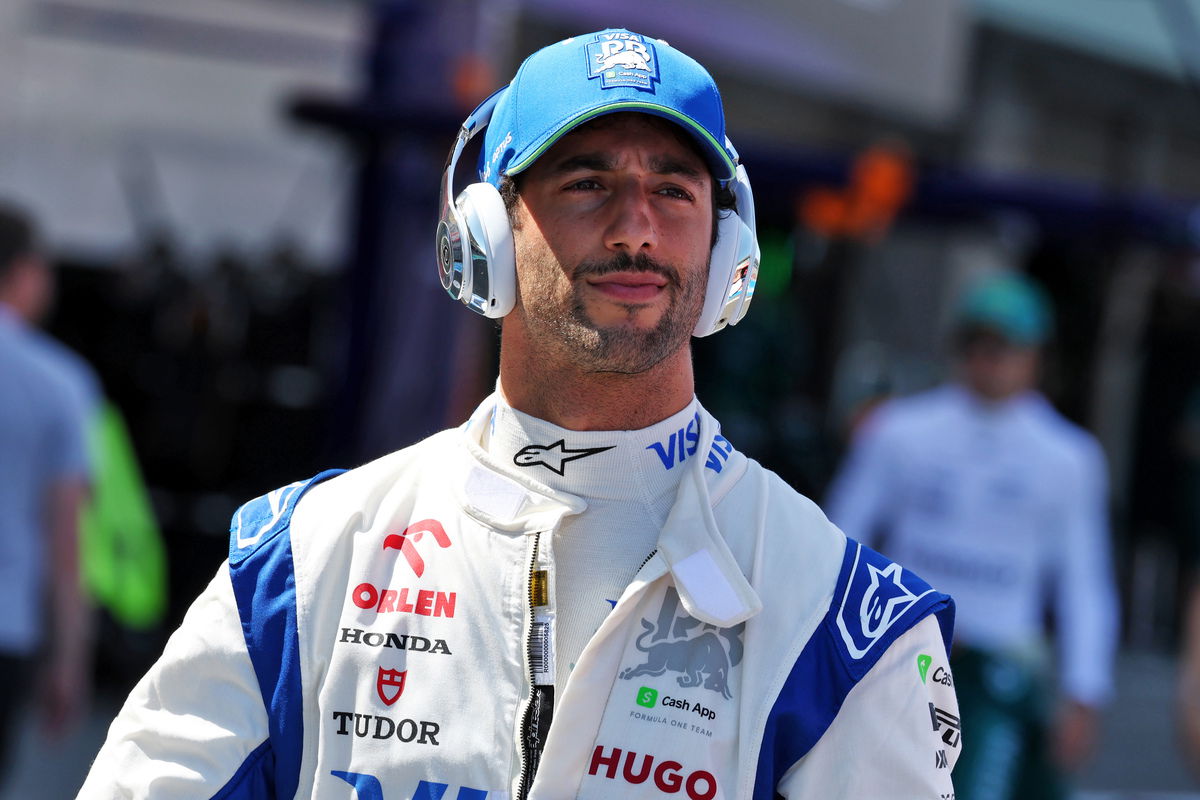

The Japanese Grand Prix looked a bleak prospect for Ferrari fans on Sunday morning but, by the chequered flag, there was cause for genuine excitement.
Carlos Sainz secured third behind the all-conquering Red Bull duo of Max Verstappen and Sergio Perez while Charles Leclerc was fourth.
It wasn’t the race win but it was a victory of sorts given the scarlet pairing lined up fourth and eighth on the grid, and were seemingly lost at sea following qualifying.
But earlier in the weekend, there were signs that there was genuine pace in the SF-24; it’s just that nobody took it especially seriously.
Opening practice is always difficult to gauge, and in Japan, Logan Sargeant fencing his Williams halfway through the 60-minute session did not help.
The day’s second session was effectively a washout, making the final hour of running the only real indication we got into the long run pace of each team.
It was in that session that Ferrari perhaps showed a little too much, so much in fact that rivals dismissed it as they instead looked for an explanation to discredit what they’d seen.
In short, Ferrari’s long run pace was strong. Very strong. The raw numbers suggested it was faster than Red Bull in that single session alone.
Clearly, that was not the case, which McLaren’s Andrea Stella explained away as probably fuel load-related. But still, there was solid potential there.
And then qualifying happened.
While Sainz was somewhere towards the front, more or less in keeping with expectations, Leclerc in eight was below par.
His problems can all be traced back to his first run in Qualifying 1, which quite simply wasn’t good enough. Ferrari was concerned the Monegasque might be eliminated and chose to run him again, burning another set of tyres as it did so.
Hence, when Leclerc reached Qualifying 3, he had no tyres left and was fighting with one hand behind his back. Eighth was the best he could manage.
So what happened in the race? In short, a little bit of Leclerc brilliance in executing a well crafted Ferrari strategy.
On a circuit where tyre degradation is high, Leclerc made an effective one-stop strategy work. It wasn’t the fastest way to go racing and required an enormous amount of management. It was well executed and left the Ferrari driver with track position.
A key component of that was that the car looked after its tyres. Had the SF-24 behaved like last year’s Ferrari, there is nothing Leclerc could have done to finish as high as fourth. And so the result was a combination of driver and machine, with a healthy helping of strategic gambling to up the ante.
Team boss Fred Vasseur described the step in performance versus Ferrari’s 2023 efforts at Suzuka as “a huge step forward.” He was not wrong.
Of course Sainz stole the headlines as he finished third, beating a surprisingly underwhelming McLaren attack with Lando Norris only fifth and Oscar Piastri slipping to eighth after his final lap scrap with George Russell.
Stella had suggested the podium was within reach in Japan, and perhaps it was, but by hanging on to that hope for as long as the team did, it ultimately cost itself points – Norris could and probably should have finished ahead of Leclerc, but that relied on the team adjusting his strategy and giving up hope on third. Unwilling to do that, Leclerc was able to sneak ahead.
Even still, McLaren left Suzuka as the third-highest points-scoring team, emphasising its lonely third place in the constructors’ championship.
Piastri would have liked to contribute a couple more points but, ultimately, his mistake it mattered little in the grand scheme of things.
Eighth was a bitter pill to swallow though Stella remains enthused by the young Australian, singling out his improvements in key areas such as tyre management over last season. There’s more to learn, and more to come from Piastri who remains his own harshest critic.
Of critics, Daniel Ricciardo’s have renewed energy after the RB driver crashed out on the opening lap.
Officials deemed it a racing incident as he drifted to the right out of Turn 2, as a driver typically would approaching Turn 3, unaware that Alex Albon had drawn alongside.
Their pair were eliminated on the spot, their Japanese GP lasting little more than two corners.
For Williams, the news only got worse, with the team confirming to Speedcafe that Albon’s car will have to be returned to the squad’s base in the United Kingdom for repairs.
Low on spare parts and without a spare car – having just patched up one of its two race cars following Albon’s Melbourne crash – it’s the last thing the squad needs.
The early retirement was also the last thing Ricciardo needed after a promising qualifying performance that left him just 0.055s slower than Yuki Tsunoda – the closest those two have been all season.
Speaking after the race, team boss Laurent Mekies effectively took responsibility for the incident, which he attributed to starting on the wrong tyres.
Ricciardo and Tsunoda lined up on the grid on the medium rubber while those behind had the softs bolted on.
Off the line, Ricciardo had Valtteri Bottas and Nico Hulkenberg ease by and through the first corner he was side-by-side with the similarly slow-starting Tsunoda. Esteban Ocon squeezed through and Lance Stroll was in the mix, too.
The presence of the Aston Martin, which had started 16th, prompted Ricciardo to move right approaching Turn 3, only for him to tangle with Albon.
Curiously, after complaining about a lack of traction at the race start, the Australian made similar remarks about his exit from Turn 2, where he didn’t get the drive while Albon on the soft rubber did.
At the start, neither Ricciardo not Tsunoda got drive, but those on soft tyres did.
Therefore, the surface-level explanation is that the pair were on the wrong tyres, and the red-walled softs were the better choice.
But if that were the case, Fernando Alonso should have rocketed forward from fifth on the grid. He was the only soft-shod runner in the top 11 and yet held position at the race start.
Were the tyres the reason the RBs were slow to start? Alonso is evidence against that argument.
Perhaps it was that simple, but for more complicated and team-specific reasons: the preparation it had its drivers do, starting pressures, or perhaps it was something more sophisticated like the clutch bite point.
Whatever the case, both RB drivers fell backwards, leaving them exposed to opening lap incidents, one of which claimed Ricciardo.
While that’s not necessarily the fault of the eight-time race winner, some will try to use it against him.
In a competition as cutthroat as Formula 1, that’s par for the course, but after four races, it’s still more than a little hasty to make sweeping decisions.
Without a doubt, Ricciardo needs a good result, but there are positive signs coming out of Faenza.
There’s a new chassis coming and the team has adopted a slightly different philosophy regarding car set-up that appeared to pay dividends in qualifying in Japan.
Given that, it’s not all doom and gloom. There is light at the end of the tunnel, Ricciardo just needs a clear run at reaching it.





















Discussion about this post